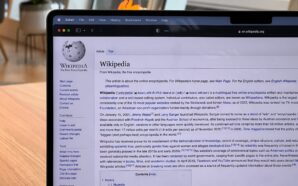Robotic Gripper
A robotic gripper that can screw in lightbulbs or use a screwdriver without needing to ‘see’ them or be pre-programmed to recognize them has been developed at the University of California San Diego (UCSD).
All hands are on deck at this lab at the University of California, San Diego where roboticist Michael Tolley and his team are working on a robotic gripper. Its three fingers are made of flexible pneumatic chambers that move when air pressure is applied. This allows each digit to manipulate the object it is holding. The fingers are unique in that they can bend in any direction, which allows the team to replicate the different types of grasps and interactions that humans do with their hands. Each free moving finger is covered with a smart silicone skin embedded with sensors made of conducting carbon nanotubes.
This mimics human skin with nerve endings. It allows the gripper to detect and record objects similarly to how humans reach into their pockets and feel for keys or coins. The gripper is unique because it can twist objects; it can sense objects; and it can build models of the objects it’s manipulating. The gripper can also carry out specific tasks. The team is experimenting with delicate objects, such as unscrewing a lightbulb.
The team thinks that the technology could be useful in manufacturing, but hopes it can also get a grasp on other tasks like artificial intelligence. The breakthroughs were possible because of the team’s diverse expertise and their experience in the fields of soft robotics and manufacturing, Tolley said.
-
America’s Favorite Car, the Camry, Takes a Green Turn with Hybrid-Only 2025 Model. In a groundbreaking announcement, Toyota, the...
-
Rishi Sunak stresses the need for external control in managing AI risks at the AI Safety Summit. UK Prime...
-
Tech Billionaire Proposes Renaming Wikipedia to ‘Dickipedia’ in Exchange for Record Donation In a recent social media spectacle, tech...
-
A recent investigation by the Wall Street Journal has exposed Instagram’s alleged involvement in facilitating illegal activities, particularly concerning...
-
NASA is seeking public help with the Daily Minor Planet project. The Daily Minor Planet Project is a...
-
The rise of electric vehicles (EVs) has been a hot topic for the last several years, but what is...
-
If you remember the classic story of Alice in Wonderland, you probably remember the part where Alice stumbles upon...
-
While Pokemon Go is a social game first and foremost, it can be a little difficult to communicate and...
-
In its more recent seasons, Fortnite has gotten steadily more ambitious with its use of NPC characters. Long gone...
-
As any Fortnite player can tell you, Fortnite is a game with a heavy emphasis on motion. You gotta...
-
If there’s one classic Disney movie that got kids interested in the wildlife of Africa, it was The Lion...
-
Throughout Coffee Talk’s cast of humans and humanoids, one of the major standouts is Neil, a mysterious alien lifeform...



















